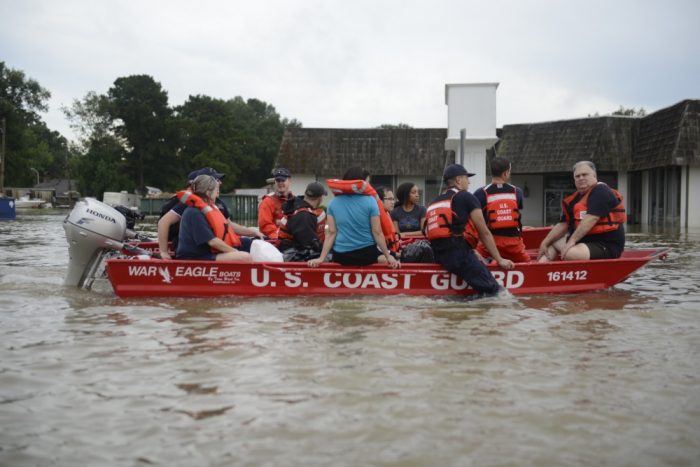Highly Prepared? Or Part of the Growing “Prepper” Crowd?
Second in a series about the value of preparedness
One of CDP’s goals is to promote the need for better planning and preparation before disasters. With disasters now becoming more frequent and growing in intensity, we are beginning to recognize that natural disasters are an all-too-common part of 21st century life. It makes sense to store food, water, batteries and other supplies to make it through disruptions caused by natural disasters. Agencies like FEMA and the big disaster relief NGOs now recognize that resilience – the ability to recover from a disaster – is facilitated through better planning and preparedness.
The need for planning has been promoted by the news media, and sometimes to silly extremes. Thanks to satellites and new technologies, weather experts can now make fairly accurate predictions about hurricanes, snowstorms, and the potential for tornadoes. This has undoubtedly saved many lives. But it has also created a lot of hype and weather reports excitedly branded “Storm Central” or “Extreme Weather.” NBC News even bought the Weather Channel, a sure sign that they sense the growing value of weather-related stories.
Weather reporting has become our newest nonstop reality show, with dramatic pictures of reporters standing in the driving rain and sad stories of destroyed homes and horrible deaths. Frequently over-blown predictions regularly result in puny storms, increasing skepticism about the accuracy of these predictions and a reluctance to take precautions. How many times have you heard some one say, “After those last storm predictions, I’m not believing it this time”? (See my earlier story on the most recent snow storm in Washington by clicking here.)
What got me thinking more about this subject was a New York Times story earlier this year about “preppers” in New York City. The Times called Prepping the Big Short: “a bet not just against a city, or a country or a government, but against the whole idea of sustainable civilization.”
CDP Advisory Council member Irwin Redlener tried to give a reassuring response but the Times found this to be in line with prepper thinking: “A prepared citizen is someone who understands how to take care of himself,” he said, “who has amassed the necessary items, who has a plan…There’s a spectrum,” Dr. Redlener said. “On one end is mindless complacency. On the other is paranoia. The challenge is to find that place in the middle where you understand that bad things can happen, but it doesn’t consume your life.”
And this wasn’t the first Times piece. In November 2012, the Times Magazine had another story entitled: “How To Survive Societal Collapse in Suburbia.” The subtitle is what caught my eye: “Preparing for a world stripped bare of modern conveniences has always appealed to cranks and extremists. But can it be sold as plan of common sense?” The article was primarily about Ron Douglas, who held five expos in 2012 that drew 40,000 people at $10 each. His radio network has logged more than 2 million podcast downloads. His goal is get people ready for natural and man-made disasters. “”It’s not about doomsday,”” Douglas said. The Times added: “It’s about showing the gun-toting mountain man in his camouflage and the suburban soccer mom in her minivan that they want the same thing: peace of mind.”
Mother Jones magazine recently ran a story on another prepper – he goes by the name Doctor Prepper. According to his own publicity, James Talmage Stevens’ best selling book “Making the Best of Basics” is the “bible of the survival industry.” Stevens is a mainstay at “Self Reliance Expos,” a convention held around the country. The magazine reports both the National Geographic Channel and Glenn Beck TV have gotten into the game with their reality shows “Doomsday Preppers” and “Independence USA.”
And then there was this shocking observation during recent Congressional hearings. POLITICO quoted NRA CEO Wayne LaPierre as saying “People all over the country fear they will be abandoned by our government during a natural disaster or civil strife and need to be able to defend themselves.”
In other testimony before Congress, LaPierre said “After Hurricane Sandy, we saw the hellish world that the gun prohibitionists see as their utopia. Looters ran wild in south Brooklyn. There was no food, water or electricity. And if you wanted to walk several miles to get supplies, you better get back before dark, or you might not get home at all. Hurricanes, Tornadoes. Riots … These are perils we are sure to face – not just maybe. It’s not paranoia to buy a gun. It’s survival.”
What are the lessons for disaster philanthropists in all this talk about disaster and survival?
More disasters are indeed happening, and more frequently. We need to acknowledge that sobering reality in our grantmaking. Are we doing enough to help our communities and NGOs be more resilient? How can our grantmaking help them prepare and plan for when disaster hits? How can we help government agencies do their work more effectively so the response to disasters is improved?
We must also realize that the threat of disasters is causing anxiety among many of our fellow citizens. Nonstop media coverage of disasters has not only made us more aware of them, but has also fueled new fears. Stories of desperate people and civil unrest from Hurricane Katrina are still fresh in our minds. All of us engaged in educating the public about disasters as well as those providing disaster services need to respond to these concerns.
Most of all, we need to demonstrate to people that in times of natural disasters we can provide services worthy of earning their trust and confidence.
In my next piece, I’ll review what one religious organization is doing to help its members plan and prepare for natural disasters.
More like this
Moving Beyond Tragedy To Stories Of Recovery, Resilience And Hope

